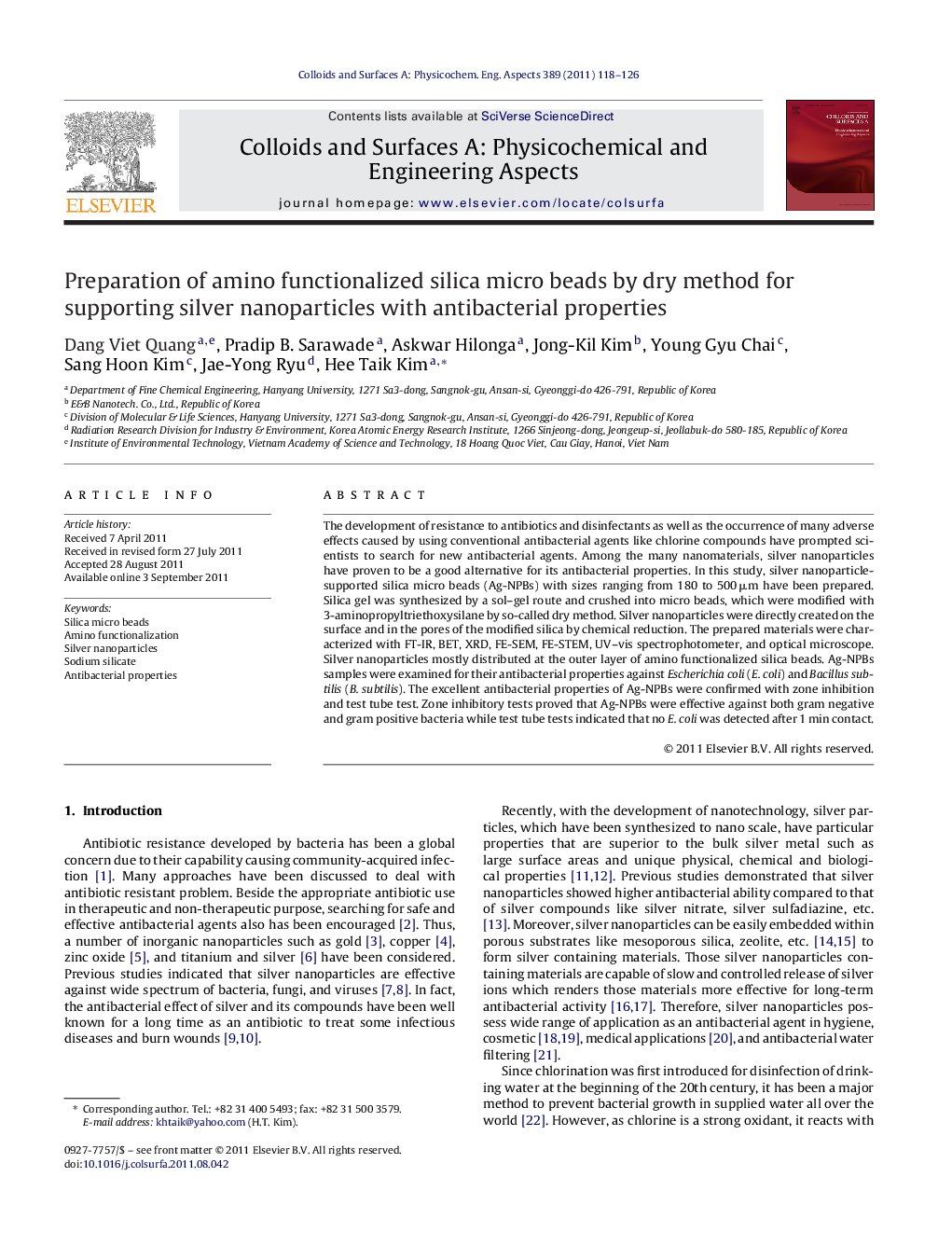| Article ID | Journal | Published Year | Pages | File Type |
|---|---|---|---|---|
| 594538 | Colloids and Surfaces A: Physicochemical and Engineering Aspects | 2011 | 9 Pages |
The development of resistance to antibiotics and disinfectants as well as the occurrence of many adverse effects caused by using conventional antibacterial agents like chlorine compounds have prompted scientists to search for new antibacterial agents. Among the many nanomaterials, silver nanoparticles have proven to be a good alternative for its antibacterial properties. In this study, silver nanoparticle-supported silica micro beads (Ag-NPBs) with sizes ranging from 180 to 500 μm have been prepared. Silica gel was synthesized by a sol–gel route and crushed into micro beads, which were modified with 3-aminopropyltriethoxysilane by so-called dry method. Silver nanoparticles were directly created on the surface and in the pores of the modified silica by chemical reduction. The prepared materials were characterized with FT-IR, BET, XRD, FE-SEM, FE-STEM, UV–vis spectrophotometer, and optical microscope. Silver nanoparticles mostly distributed at the outer layer of amino functionalized silica beads. Ag-NPBs samples were examined for their antibacterial properties against Escherichia coli (E. coli) and Bacillus subtilis (B. subtilis). The excellent antibacterial properties of Ag-NPBs were confirmed with zone inhibition and test tube test. Zone inhibitory tests proved that Ag-NPBs were effective against both gram negative and gram positive bacteria while test tube tests indicated that no E. coli was detected after 1 min contact.
Graphical abstractFigure optionsDownload full-size imageDownload as PowerPoint slideHighlights► Amino functionalized silica micro beads were successfully prepared by a so-called dry method. ► Silver nanoparticles mostly distributed at the outer layer of amino functionalized silica beads. ► Silver nanoparticles supported silica micro beads have excellent antibacterial properties. ► No E. coli was detected after 1 min contact with silver nanoparticles supported silica micro beads.
